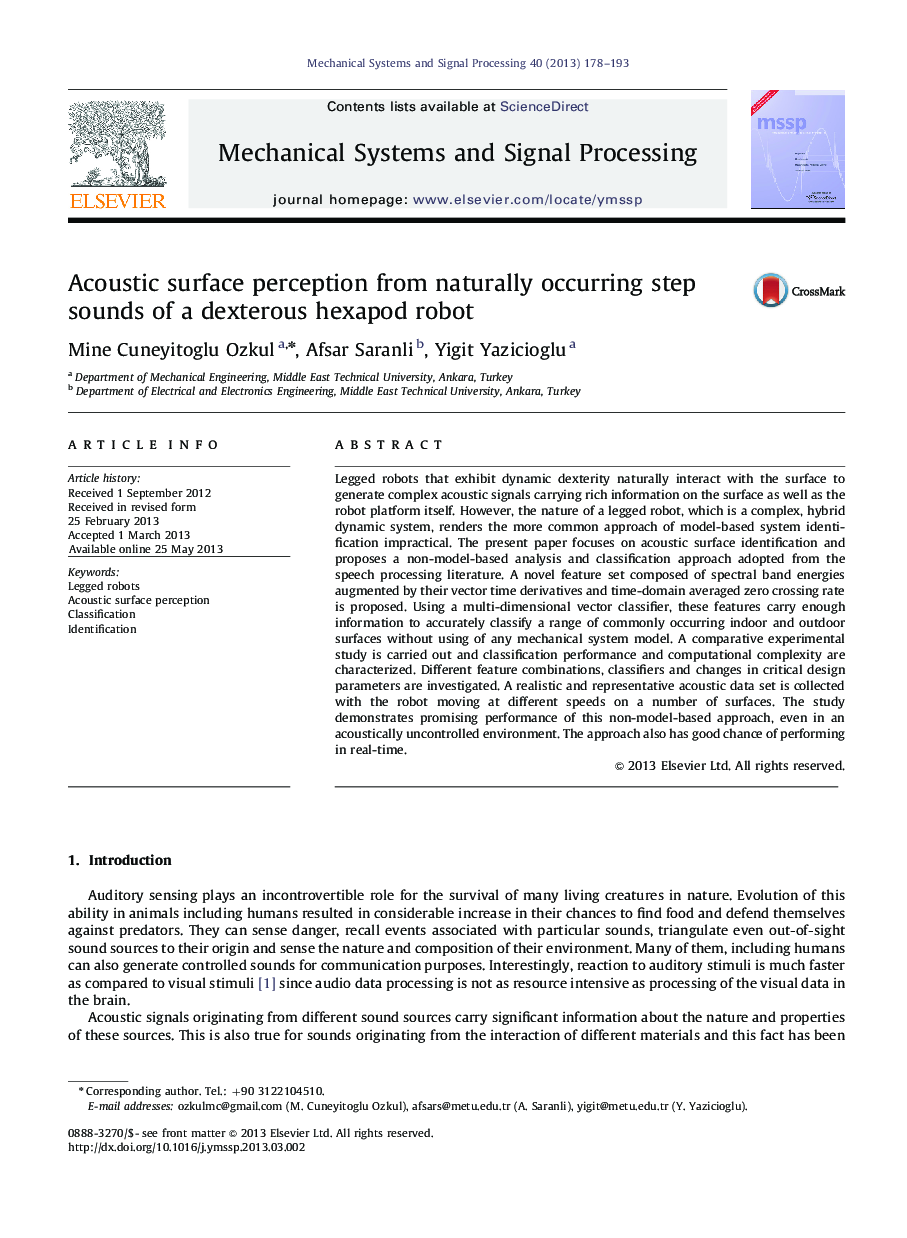| Article ID | Journal | Published Year | Pages | File Type |
|---|---|---|---|---|
| 561200 | Mechanical Systems and Signal Processing | 2013 | 16 Pages |
Legged robots that exhibit dynamic dexterity naturally interact with the surface to generate complex acoustic signals carrying rich information on the surface as well as the robot platform itself. However, the nature of a legged robot, which is a complex, hybrid dynamic system, renders the more common approach of model-based system identification impractical. The present paper focuses on acoustic surface identification and proposes a non-model-based analysis and classification approach adopted from the speech processing literature. A novel feature set composed of spectral band energies augmented by their vector time derivatives and time-domain averaged zero crossing rate is proposed. Using a multi-dimensional vector classifier, these features carry enough information to accurately classify a range of commonly occurring indoor and outdoor surfaces without using of any mechanical system model. A comparative experimental study is carried out and classification performance and computational complexity are characterized. Different feature combinations, classifiers and changes in critical design parameters are investigated. A realistic and representative acoustic data set is collected with the robot moving at different speeds on a number of surfaces. The study demonstrates promising performance of this non-model-based approach, even in an acoustically uncontrolled environment. The approach also has good chance of performing in real-time.
► Acoustic surface perception for dynamically dexterous legged robots. ► Proposal and evaluation of a set of acoustic features novel to acoustic robotic perception. ► Evaluation of a number of pattern classifiers for the classification task. ► Experimental validation on a realistic indoor and outdoor data set.
